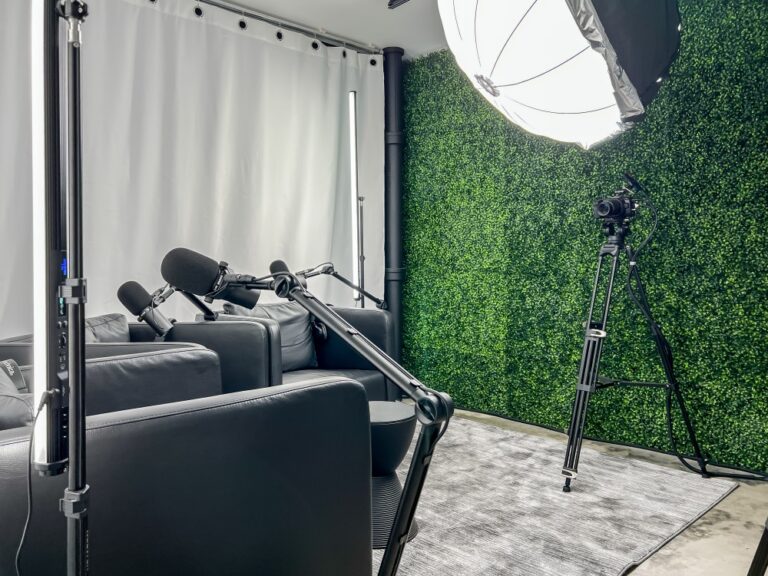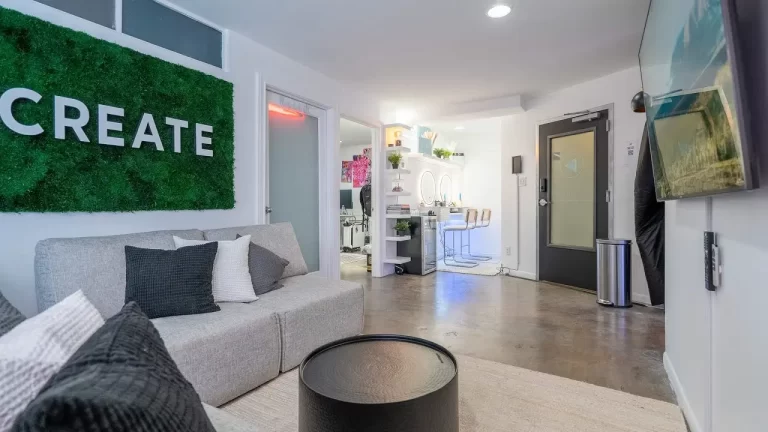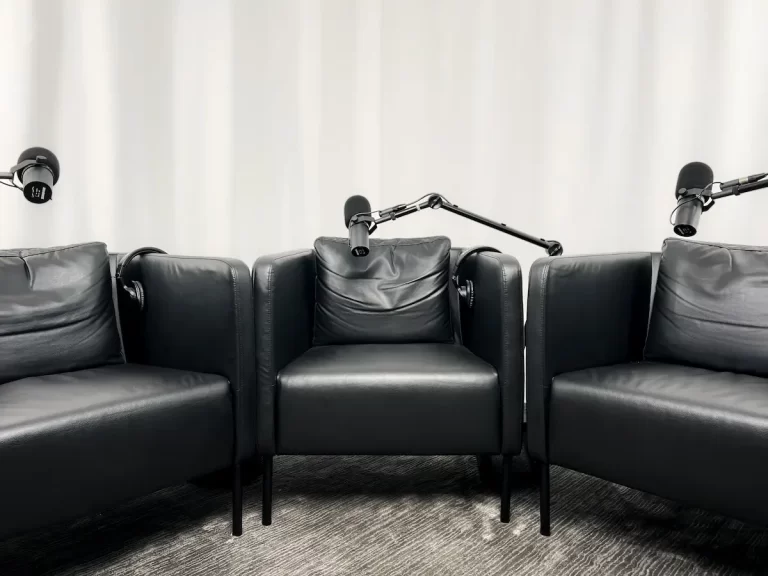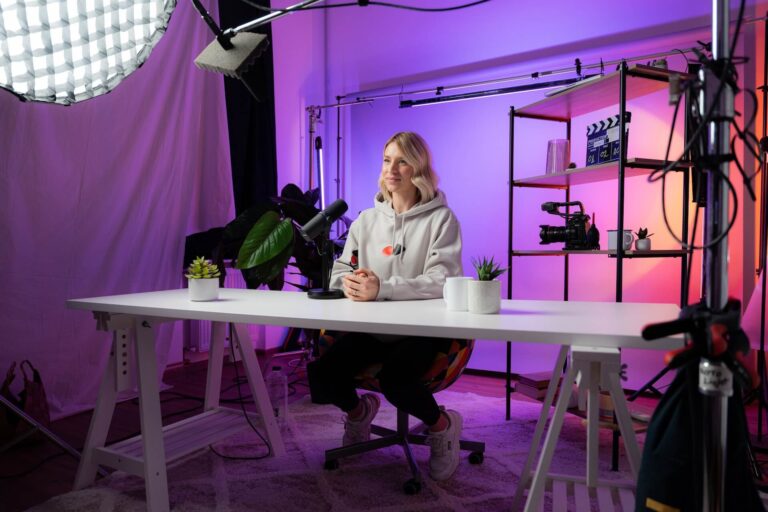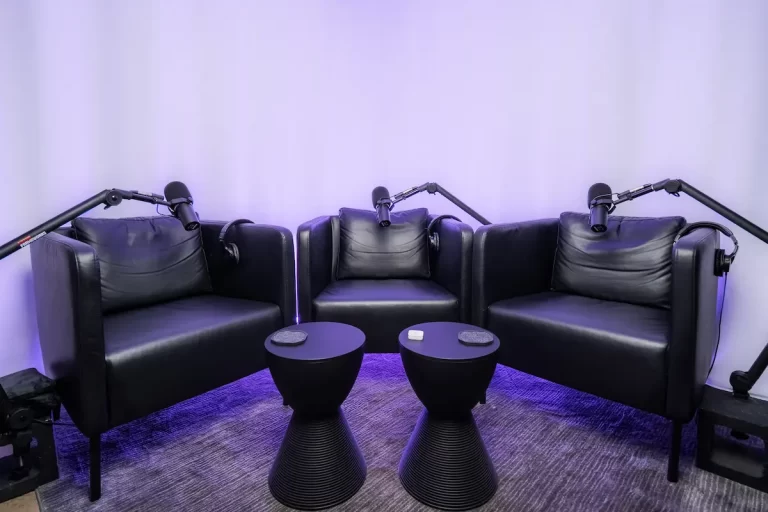Unleashing Your Podcast Passion: A Comprehensive Guide to Starting for Free
Podcasting is awesome because it gives content creators a unique way to engage with their audience through audio storytelling.
It’s like having a personal conversation with your listeners, right in their ears! Plus, it’s super convenient and portable, so people can listen to podcasts whenever and wherever they want.
The best part is that podcasts cover a wide range of topics, so there’s something for everyone. If you start a podcast, you can let your creativity shine, express yourself, and build a loyal following. It’s such a powerful tool for sharing information, stories, and different perspectives!
Starting a podcast for free is a game-changer, especially for beginners. It’s like dipping your toes in the water without breaking the bank.
You can experiment with different content ideas, try out new formats, and find your own style, all without spending a dime.
Thanks to free hosting platforms, recording software, and basic equipment, you can test the waters and see what works before you go all in.
This approach makes podcasting accessible to everyone, encourages exploration, and gives you a low-risk entry point into the exciting world of podcasting. So, why not give it a shot?
If you’ve always wondered how to start a podcast for free or even Googled ‘what do I need to start a podcast,’ this is the right article for you. Read on and find out everything!
Understanding the Basics
A podcast is like a digital audio or video file that you can find on the internet. You can stream or download it whenever you want.
They cover all sorts of topics, from news and education to entertainment and storytelling. You’ll find podcasts made by individuals, organizations, or businesses. It’s a flexible and easy way to share information and connect with people.
You can create and listen to podcasts on popular platforms like Apple Podcasts, Spotify, and Google Podcasts, among others.
Each platform has its own special features, audience, and rules for submitting content. It’s important for creators to understand these platforms so they can choose the right ones to share their content and make sure people can find and enjoy it easily.
Setting the Foundation
To make your podcast stand out and attract a dedicated following, it’s important to start by clarifying its focus. Take some time to reflect on what truly ignites your passion, what subjects you possess deep knowledge in, and who your target audience is.
By having a well-defined niche, you can tailor your content to resonate deeply with your listeners, establishing your podcast as a trusted voice in a specific subject area.
Next, give careful consideration to choosing a distinctive and memorable name for your podcast. Your podcast’s name is not just a label, but a key part of your brand and can greatly impact how easily people discover and remember your show.
Make sure the name reflects the essence of your content, is easy to recall, and stands out amidst the crowded podcast landscape.
Having a unique name will contribute to the overall identity of your podcast and make it more appealing and enticing to potential listeners, drawing them in to explore the captivating world you’ve created.
Essential Equipment
When it comes to producing professional-sounding podcasts, investing in a quality microphone is key.
You have options like USB microphones such as the Blue Yeti or XLR microphones like the Shure SM7B that are quite popular. And don’t forget about the software side of things – tools like Audacity (which is free!) or Adobe Audition can help you edit and enhance your audio recordings.
To ensure top-notch audio quality, it’s important to have an acoustically treated recording space that minimizes background noise and echoes.
Plus, make sure you get comfortable, closed-back headphones! They’re great for monitoring your recordings and catching any imperfections or background noise during the recording or editing process.
If you really want to take things up a notch, consider adding accessories like pop filters, windshields, or even boom arms – these can further improve your audio quality and make your recording experience even better.
By investing in reliable equipment and paying attention to the details, you’ll elevate the professionalism of your podcast and deliver a polished listening experience for your audience.
Software Solutions
You can explore some free editing software options to polish your podcast episodes. Audacity, a widely used open-source tool, is perfect for audio enhancement with its range of editing features.
If you’re a Mac user, GarageBand is a user-friendly option with capabilities for basic editing, adding music, and incorporating effects. Another great choice is Ocenaudio.
These tools make it super easy for beginners to refine their audio content without breaking the bank, making podcast production accessible to all.
When it comes to hosting platforms, go for ones that cater to beginners and offer simplicity and cost-effectiveness.
Platforms like Podbean, Buzzsprout, and Anchor have user-friendly interfaces for uploading, managing, and distributing podcast episodes. The best part? They often offer free hosting plans with limited storage, which is perfect for those starting on a budget.
Just make sure to understand the features and limitations of each platform so you can choose the one that aligns best with your podcasting goals and resources.
Crafting Compelling Content
Let’s start by outlining a clear structure for each episode. First, define your goals, main topics, and the key messages you want to convey.
You can also consider incorporating segments, interviews, or storytelling elements to keep your content dynamic and interesting. So when you plan ahead, it ensures a coherent flow, making it easier for both you and your audience to follow and engage with the material.
Now, let’s talk about crafting a compelling script. It’s vital to maintain listener interest, right? So, try using conversational language to create a connection with your audience.
Don’t be afraid to incorporate storytelling techniques, humor, and relatable anecdotes to captivate your listeners. A well-written script serves as a roadmap, guiding your delivery and ensuring your message resonates effectively.
Remember, it’s important to balance structure with spontaneity. This will help maintain authenticity and keep your content engaging and enjoyable.
Recording Techniques
When recording, you can adapt techniques to different environments. For the best sound quality, choose a quiet space with minimal background noise.
Use acoustic treatments like rugs or curtains to reduce echoes. When recording outside or in unconventional settings, use windshields or pop filters to minimize disturbances.
In addition, to elevate your audio production, employ professional recording techniques. Keep microphone placement consistent for uniform sound.
Set appropriate recording levels to avoid distortion. Use compression and equalization during post-production to refine the audio.
Regularly monitor and test equipment to catch potential issues early. Follow these tips to create a podcast with an optimal auditory experience, captivating your audience with clear and professional sound.
Editing Like a Pro
You can learn the basics of editing just by dedicating some time to it. Firstly, you must understand the importance of pacing, remove unnecessary pauses, and refine transitions between segments.
Then, you can dip your toes into seamlessly integrating music and sound effects to enhance your podcast’s overall flow. After that, you’ll be ready to familiarize yourself with editing terminology, for example, cuts, fades, and EQ adjustments to come up with polished and professional-sounding episodes.
To demystify the editing process, you can walk through different editing tools, such as Audacity, a widely-used open-source software with which you can learn to trim, cut, and enhance your audio recordings.
Online, you’ll find many step-by-step guides to navigate the interface, apply effects and export your finalized podcast episodes.
The idea is that you can harness the capabilities of free tools so that the editing process is accessible and efficient.
Music and Copyright
When it comes to adding music to your podcast, you want to make sure you’re not infringing on any copyright. Luckily, there are plenty of sources for royalty-free music that can enhance your podcast and set the right mood.
Platforms like Epidemic Sound, Jamendo, and Free Music Archive offer a wide range of music options for different themes and vibes.
By understanding how to access and use royalty-free music, you can create an engaging podcast that also stays on the right side of copyright laws.
Navigating copyright regulations can be tricky, but it’s important to avoid any legal pitfalls when creating your podcast.
Take the time to learn about Creative Commons licenses and how they affect the use of music in your podcast. It’s also helpful to understand the ins and outs of fair use and when it applies to your content.
By familiarizing yourself with the legal aspects of using copyrighted material, you can ensure that your podcast is both entertaining and legally compliant.
Eye-Catching Podcast Artwork
Want to create captivating podcast artwork? Here are some key tips to master the art. First, make sure to use readable fonts and choose a color scheme that goes with your podcast’s theme.
It’s also a good idea to include relevant images or graphics that capture the essence of your content. And don’t forget about sizing guidelines to ensure your artwork looks professional on different platforms.
By crafting visually appealing artwork, you’ll enhance your podcast’s brand identity and attract more listeners to explore your episodes.
Plus, if you’re looking for free graphic design tools to make stunning podcast artwork, check out platforms like Canva and GIMP. They offer user-friendly interfaces and templates that simplify the design process.
You can easily learn the basic features, from selecting dimensions to adding text and images. These tools empower podcasters, even those with limited design experience, to create eye-catching artwork that truly represents their brand and attracts a wider audience. Give them a try and see the difference it makes!
Publishing Your Podcast
The process of uploading your podcast to popular platforms such as Apple Podcasts, Spotify, and Google Podcasts is a crucial step in reaching a wider audience.
Each of these platforms has specific requirements and guidelines that you must adhere to when uploading your podcast episodes.
This includes the audio format, metadata, artwork, and more. Understanding these guidelines will ensure your content meets the platform’s criteria for successful submission.
The submission process involves creating an account, uploading your episodes, and providing necessary information about your podcast. Once completed, your podcast is ready to be shared with listeners around the globe.
At the same time, RSS feeds play a vital role in your podcast distribution. They are a type of web feed that allows users and platforms to access updates to online content in a standardized, computer-readable format.
When it comes to podcasting, your RSS feed contains information about your podcast and all your episodes.
Accurate and optimized RSS feeds ensure consistent updates across all platforms where your podcast is available.
A well-structured RSS feed aids in podcast discoverability and boosts listener engagement. Understanding and managing your podcast RSS feed allows you to control your content distribution, thereby maximizing its reach.
Building Your Audience
If you want your podcast to reach a wide audience, there are two crucial strategies you can use. First, let’s talk about promoting on social media. Platforms like Instagram, Twitter, and Facebook can be powerful tools to expand your podcast’s reach.
So, sharing clips, making engaging posts, and interacting with your audience is key. These not only attract new listeners but also help maintain a strong relationship with existing ones.
Oh, and don’t forget to give your audience some behind-the-scenes content, updates, and sneak peeks into upcoming episodes. This keeps them engaged and coming back for more.
Now, let’s move on to collaborations and cross-promotion. This is another excellent way to grow your podcast’s audience.
By teaming up with other podcasters or influencers in your field, you can tap into their audience and introduce your podcast to a whole new set of listeners. And don’t underestimate the power of cross-promotion.
Advertising your podcast on similar shows allows you to reach a wider audience that’s already interested in your type of content. Just make sure to choose partners whose content aligns with yours for the best results.
Monetizing Your Podcast
One of the great things about podcasting is that it offers the potential to make money from it. And the best part? You don’t necessarily need a big budget to get started. In fact, there are plenty of free ways to monetize your podcast.
First, let’s talk about affiliate marketing. This is when you promote a product or service on your podcast and earn a commission for any sales that come through your referral.
It’s a win-win situation! Another option is to consider donations or pledges from your loyal listeners. Platforms like Patreon make it easy for your audience to support you financially on a regular basis.
Now, when it comes to integrating ads, timing is everything. A good rule of thumb in the podcasting world is to wait until you have at least a thousand regular listeners.
Once you hit that milestone, you can start inserting pre-recorded ads at the beginning (pre-roll), middle (mid-roll), or end (post-roll) of your podcast. Mid-roll ads are often seen as the most effective, but you need to make sure they’re relevant and add value to your listeners.
So, whether you’re looking to make some extra cash or turn your podcast into a full-time gig, there are plenty of opportunities to monetize your show. Happy podcasting!
Conclusion
In conclusion, starting a podcast does not need to be an expensive or intimidating endeavor. Remember, the key steps are straightforward: pinpoint your passion, identify your target audience, plan out your content, select a podcast hosting platform, and finally, record and publish your episodes.
Diving into the world of podcasting may seem daunting at first, but remember that every seasoned podcaster started from scratch. Your unique voice and perspective are exactly what someone out there is looking for.
Embrace the process, learn as you go, and most importantly, enjoy sharing your passion with the world. Don’t let the fear of the unknown hold you back.
Your podcasting journey begins today. Keep pushing forward, and soon enough, you will see your podcast passion come to life.


